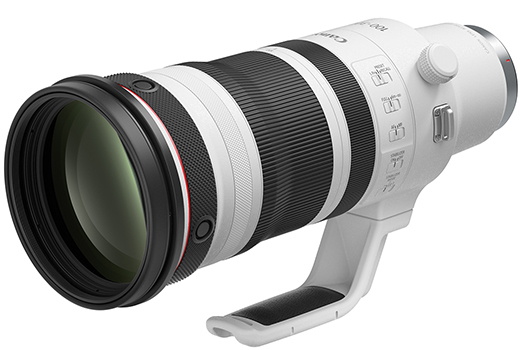- Specifications
- Block diagram
| Marketed | May 2023 |
| Original Price | Open price |
| Lens Construction (group) | 18 |
| Lens Construction (element) | 23 |
| No. of Diaphragm Blades | 9 |
| Minimum Aperture | 22 |
| Closest Focusing Distance (m) | 1.8 |
| Maximum Magnification (x) | 0.06(at 100mm),0.16(at 300mm) |
| Filter Diameter (mm) | 112 |
| Maximum Diameter x Length (mm) | Approx. 128×323.4 |
| Weight (g) | Approx. 2590 |
The RF100-300mm F2.8 L IS USM is a large-aperture zoom lens that possesses the “L”, or “Luxury” which indicates the pursuit of the highest standards of quality, featuring high image quality and superb portability in a compact and lightweight design. The new lens features a more expansive zoom range than the RF70-200mm F2.8 L IS USM (released in November 2019) and a faster aperture than the RF100-500mm F4.5-7.1 L IS USM (released in August 2020), thus serving an even larger range of user needs. By attaching a lens extender (sold separately), the lens can realize a maximum focal length of 600mm1 at the telephoto end, making it suitable for a greater variety of photography scenarios.
Among lenses that support full-frame CMOS sensor-equipped DILCs and with focal length ranges including 300mm, the RF100-300mm F2.8 L IS USM is the world’s most lightweight2 f/2.8 zoom lens. In addition, it weighs just approximately 2,590g, making it easily portable. What’s more, the lens maintains a fast f/2.8 aperture across the entire zoom range, which enables capturing clear images of moving subjects with high shutter speeds in low-light environments such as indoor sports facilities. The lens also features superb background blurring and effectively leverages the compression effect of telephoto lenses to make possible a rich variety of expressions when shooting portrait photos.
With a lens element configuration that leverages the RF mount’s characteristic wide aperture and short back focus3, the RF100-300mm F2.8 L IS USM features a total of 23 lens elements—including one fluorite lens, four UD lenses4 and one glass-mold aspherical lens—arranged in 18 groups. This helps reduce optical phenomena that impair image quality, thus providing high image quality that is comparable single-focal-length (prime) L-series lenses. What’s more, the image quality remains excellent even when using a lens extender (sold separately), enabling users to achieve a greater range of imaging expression.
The RF100-300mm F2.8 L IS USM employs an electronic floating focus control system that operates a focus lens group and a floating lens5 group using two ultrasonic “Nano USM” motors that operate independently to provide ideal autofocus control. This makes possible AF with high speed and high precision when shooting still photos, as well as the ability to smoothly track moving subjects when shooting video.
1 When used with the Extender RF2x (released in July 2020). Max focal length when used with Extender RF1.4x (released in July 2020): 420 mm.
2 As of April 19, 2023. Based on Canon research.
3 The distance between the optical axis from the vertex of the rear lens element to the imaging plane.
4 Lens elements utilizing ultra-low dispersion (UD) glass.
5 Lenses that move in conjunction with changes in focal length to correct aberrations.

Fluorite lenses UD lenses Aspherical lens IS unit


